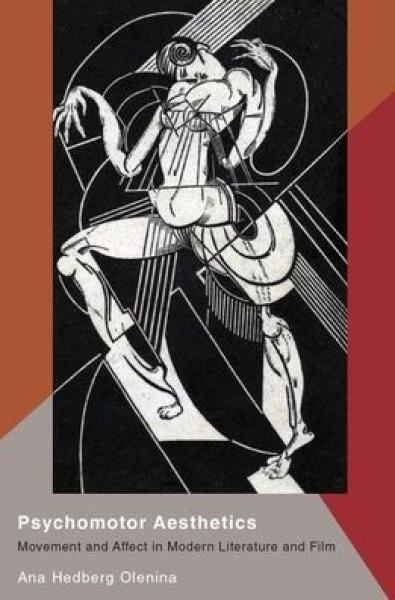Description
In Psychomotor Aesthetics, author Ana Hedberg Olenina explores the effects of physiological psychology on art at the turn of the 20th century. The book explores its influence on not only art scholars and theorists, wishing to understand the relationship between artistic experience and the internal processes of the mind, but also cultural producers more widely. Actors incorporated psychology into their film acting techniques, the Russian and American film industries started to evaluate audience members' physical reactions, and literary scholars began investigations into poets' and performers' articulation. Yet also looming over this newly emergent field were commercial advertisers and politicians, eager to use psychology to further their own mass appeal and assert control over audiences. Drawing from archival documents and a variety of cross-disciplinary sources, Psychomotor Aesthetics calls attention to the cultural resonance of theories behind emotional and cognitive experience - theories with implications for today's neuroaesthetics and neuromarketing.
"In the late 19th century, neurophysiology introduced techniques for detecting somatic signs of psychological experiences. Scientific modes of recording, representing, and interpreting body movement as "expressive" soon found use in multiple cultural domains. Based on archival materials, this study charts the avenues by which physiological psychology reached the arts and evaluates institutional practices and political trends that promoted interdisciplinary engagements in the first quarter of the 20th century. In mapping the emergence of a paradigm it calls "psychomotor aesthetics," this book uncovers little-known sources of Russian Futurism, Formalist poetics, avant-garde film theories of Lev Kuleshov and Sergei Eisenstein, and early Soviet programs for evaluating film-goers' reactions. Drawing attention to the intellectual exchange between Russian authors and their European and American counterparts, the book documents diverse cultural applications of laboratory methods for studying the psyche. Both a history and a critical project, the book attends to the ways in which artists and the orists dealt with the universalist fallacies inherited from biologically-oriented psychology-at times, endorsing the positivist, deterministic outlook, and at times, resisting, reinterpreting, and defamiliarizing these scientific notions. In exposing the vastness of cross-disciplinary exchange at the juncture of neurophysiology and the arts at the turn of the 20th century, Psychomotor Aesthetics calls attention to the tremendous cultural resonance of theories foregrounding the somatic substrate of emotional and cognitive experience-theories, which anticipate the promises and limitations of today's neuroaesthetics and neuromarketing"--
"Olenina's groundbreaking book introduces new material that allows for a radical rethinking of Russian modernism. It is a well-researched interdisciplinary history with far-reaching consequences for contemporary aesthetics at large. Very different fields of artistic activity and very different names (both well-known and forgotten ones) suddenly join to form a new and illuminating constellation of facts, works, and ideas, permitting to read the apparently well-known story of Russian avant-garde in a surprising way. In the study, historical material converges with recent attempts in post-Kantian aesthetics to overcome the role of the subject. The author's focus on kinesthetics and depersonalization opens up a possibility of thinking art beyond the limits of representation. Highly recommended for anybody interested in the history of modernism and posthuman (post-subjective) culture." -- Mikhail Iampolski, author of The Memory of Tiresias: Intertextuality and Film
"A fascinating study about the expansion of modern psychology into the field of artistic practice and the countermovement of poets and film directors into the explorations of arts' effects and affects, stretching from the experiments of Russian physiologists and theories of Soviet Futurists and Constructivists to the post humanist condition." -- Oksana Bulgakowa, author of Sergei Eisenstein: A Biography
"Psychomotor Aesthetics offers a fantastic addition to the growing collection of scholarly work on modernism in its relation to contemporaneous sciences of the body. Impressive in its geographical reach, the book makes a compelling case for placing corporeal movement (and specifically the bi-directional relation between bodily motion and mental states) at the center of intersecting and competing modernist aesthetic projects, from futurist poetry to Eisensteinian filmmaking." -- Michael Cowan, Professor of Film and Media History, University of St Andrews
Product Details
- Oxford University Press, Brand
- May 1, 2020 Pub Date:
- 0190051264 ISBN-10:
- 9780190051266 ISBN-13:
- 416 Pages
- 9.1 in * 6.1 in * 1 in Dimensions:
- 1 lb Weight:




